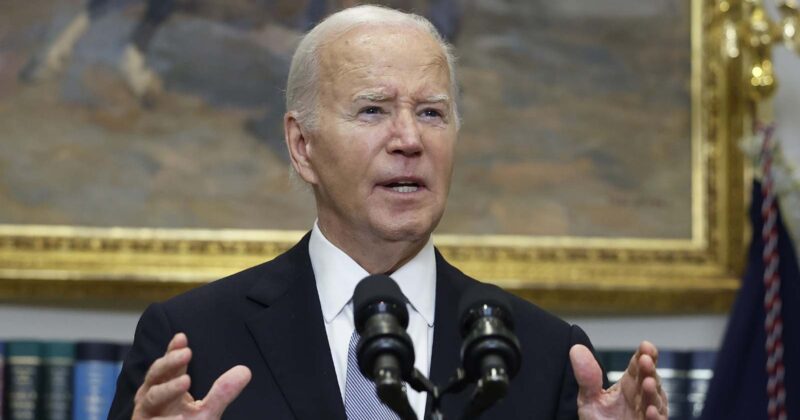President Biden’s Environmental Protection Agency (EPA) finalized a new rule Tuesday, taxing methane emissions from the oil and gas sector.
The new tax was born out of Biden’s sweeping climate legislation passed by Congress, known as the Inflation Reduction Act, which included a Waste Emissions Charge provision. Although the waste emissions charge was mandated by Congress, the Biden administration had discretion on how tightly to clamp down.
The fee will start at $900 per metric ton of methane emitted over a specific performance level during 2024. In subsequent years, the fee will increase. In 2025, it will grow to $1,200 per metric ton. In 2026, it will increase to $1,500 per ton. Meanwhile, each subsequent year after that, the fee will continue to rise, according to the EPA.
“The final Waste Emissions Charge is the latest in a series of actions under President Biden’s methane strategy to improve efficiency in the oil and gas sector, support American jobs, protect clean air, and reinforce U.S. leadership on the global stage,” EPA Administrator Michael Regan said in a press release.
Prior to Tuesday’s new methane emissions rule, Biden and his administration imposed other rules aimed at clamping down on methane. Shortly after taking office in 2021, he signed a law repealing a Trump-era action that rescinded stricter methane-emissions standards imposed under then-President Obama.
While climate change advocates, such as the Clean Air Task Force, have praised Biden’s rule regulating methane emissions, Steve Milloy, a fellow at the Energy and Environmental Legal Institute, described the action as “irrelevant.” Milloy said that because upwards of 95% or more of the greenhouse gasses trapped by the earth’s atmosphere are water vapor and carbon dioxide, little to no room remains for methane to be stored.
Milloy also suggested the new methane emissions rule will likely be ineffective, considering it targets the oil and gas sector but not the agricultural sector as well.
“The largest source of methane is actually microbes,” Milloy pointed out — as opposed to man-made power plants. Microbes are tiny organisms that live in cow’s stomachs, agricultural fields and wetlands, according to The Washington Post.
In addition to the effectiveness, Milloy pointed out that the tax will also be to the benefit of Big Oil companies, while hurting smaller ones.
“It’s because all these regulations cripple the competition,” Milloy said. “Taxing the oil industry, you know, Big Oil is going to be all for that.”
Rep. Greg Murphy, R-N.C., who was endorsed by Citizens for Responsible Energy Solutions during his bid for re-election this year, echoed that going after the oil and gas industry with this latest tax will serve to “raise costs and prevent investment.”
“Thankfully, this insanity will end in January,” Murphy said.
President-elect Trump has suggested he would repeal many of the green energy initiatives implanted within Biden’s Inflation Reduction Act.
This week, the new president-elect nominated former New York Rep. Lee Zeldin to be his next EPA chief. Meanwhile, Republican Alaska Gov. Mike Dunleavy has been floated as a possibility for Trump’s next energy secretary, among others.

